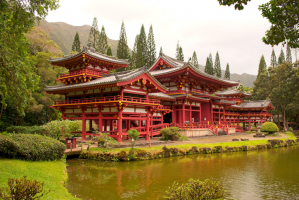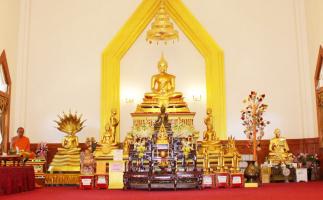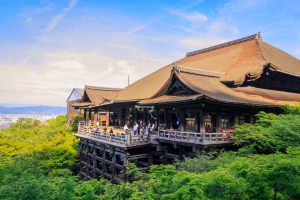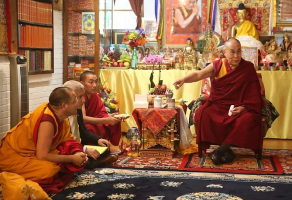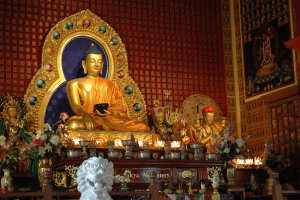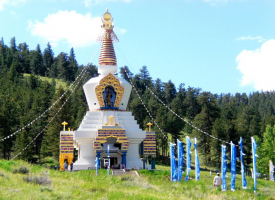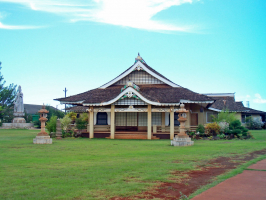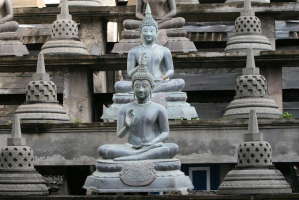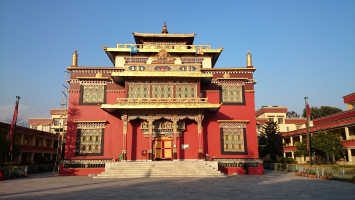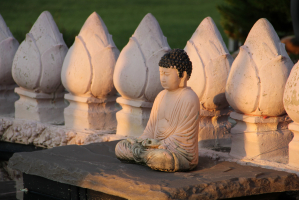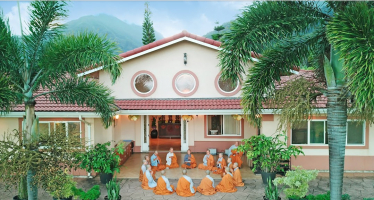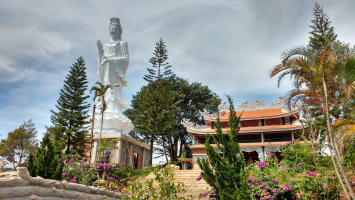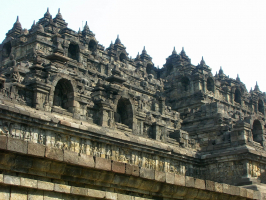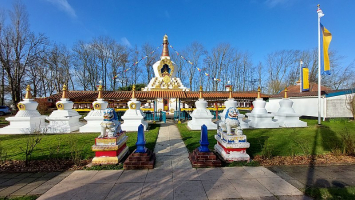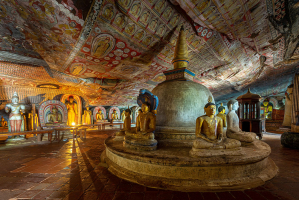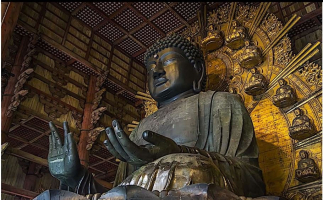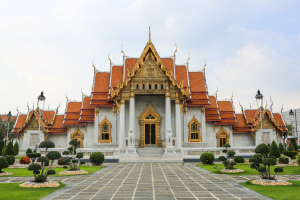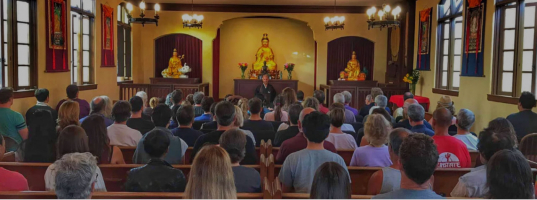Top 10 Best Buddhist Temples in Tokyo
Toplist’s list of the best Buddhist temples in Tokyo is your ticket to an awe-inspiring journey. From the peaceful elegance of Kaneiji to hidden gems like ... read more...Marishiten Tokudaiji, we're unveiling the ultimate spiritual havens in this bustling city. So, whether you're into historic architecture, lush gardens, or just some zen vibes, Tokyo's got it all.
-
Senso-ji Temple, Tokyo's oldest Buddhist temple, is renowned as Asakusa Kannon for housing the compassionate Sacred Avalokitesvara This historic site stands as a pivotal center of worship, resonating with spiritual significance across Japan.
This Bodhisattva responds to prayers with compassion and kindness and can take on many forms. These forms include the Senju (1000 hands), Nyoirin (wishing fulfillment and a Dharma wheel), and Juichimen (11 faces). All of these forms are descended from the single-faced, two-handed Avalokitesvara Bodhisattva.
Stepping into the Main Hall (Kannon-do), visitors encounter the artistic legacy of Noguchi Sekko, one of the Edo Period's Three Best Calligraphers. The impressive masterpieces, displayed on both sides of a significant donation box, showcase poignant phrases from Hanjusan, written by Shan-tao (Zendo Daishi) in the Tang Dynasty. These words beautifully encapsulate the all-encompassing and benevolent nature of Bodhisattva Kannon, emphasizing equality and compassion for all.
Ever since Buddhist priest Shokai hid the Kannon statue in 645, it’s been kept safe in a beautiful small temple called Gorgeon Zushi, protected by lots of locks. Even top priests from Senso-ji can’t see this special statue, making this place feel even more mysterious and holy. Senso-ji Temple attracts a staggering 30 million visitors each year and deserves to be at the top of the best Buddhist temples in Tokyo.
Address: 2-3-1 Asakusa, Taito-ku, Tokyo, 111-0032, Japan
Phone: +81 3-3842-0181
Website: https://www.senso-ji.jp/english/
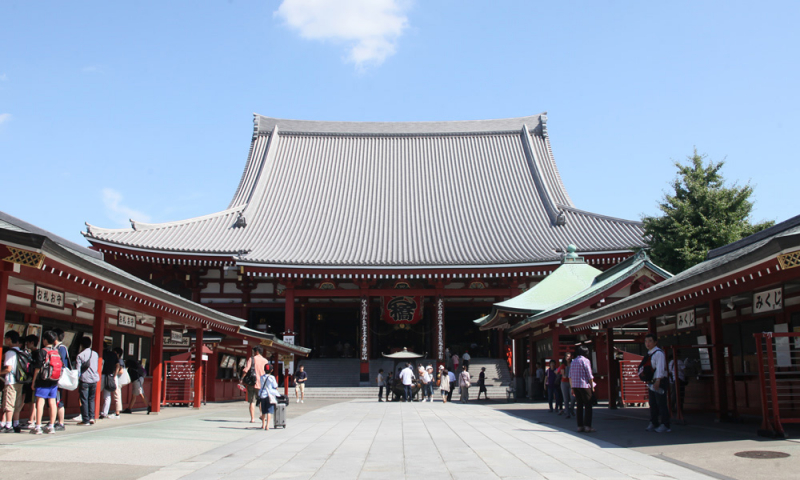
Screenshot of https://www.senso-ji.jp/english/ Video by @TokyoStreetView -
Zojoji Temple, established in 1393 as a vital nembutsu seminary for Jodo shu in eastern Japan, holds deep roots in Tokyo's history. Originally situated elsewhere, Zojoji found its present location in 1598, following the arrival of Ieyasu Tokugawa, the initiator of the Tokugawa shogunate, in Edo, now Tokyo, marking a pivotal shift in its history due to political and societal changes.
Despite the challenges of changing times, Zojoji Temple has tenaciously upheld its significance by meticulously reconstructing its edifice and structures, remaining the paramount sanctuary for Jodo shu and the central seminary for nembutsu teachings.
Zojoji Temple offers visitors a unique glimpse into history through its small basement museum housed within the main hall. A standout feature of the museum is a meticulously crafted 1:10 scale model showcasing the former splendor of the Tokugawa Mausoleum's buildings. This detailed model lets visitors see the architectural beauty of structures that existed before World War II inflicted significant damage.
Zojoji Temple is not only one of the best Buddhist temples in Tokyo with religious and spiritual significance but also serves as a place to preserve history. It invites visitors to explore and learn about the past through the lens of the previous manifestation of the Tokugawa Mausoleum.
Address: 4-7-35 Shibakoen Minato-ku, Tokyo 105-0011, Japan
Phone: (81)3-3432-143
Website: https://www.zojoji.or.jp/en/
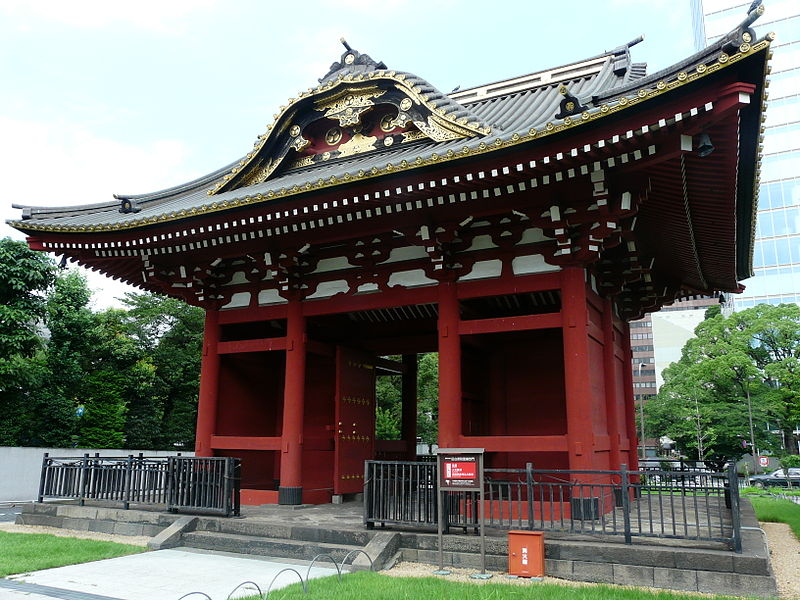
Photo by https://commons.wikimedia.org/wiki/File:Zojo-ji_Temple_Minata_Tokyo_August_2014_04.JPG Video by @Massimo Nalli -
Sengakuji Temple, a quaint sanctuary near Tokyo's Shinagawa Station, holds a poignant significance as the resting place of the famed "47 Ronin," revered as the masterless samurai from Ako. This historical tale, immortalized through kabuki theater during the Edo Period, draws numerous visitors to pay homage at the temple's graveyard, where the 47 Ronin lie.
The temple garners particular attention on December 14, commemorating the anniversary of the Ronin's avenging act. During this annual festival, thousands flock to Sengakuji, crowding the small graveyard and filling the air with the fragrance of incense sticks (senko). Amidst the festivity, temporary food stands offer delectable treats like okonomiyaki and takoyaki.
At Sengakuji, an enlightening tribute was established in the Akogishi Kinenkan, a modest memorial museum dedicated to the 47 Ronin. Within the temple grounds, visitors can tour artifacts such as letters and armor associated with samurai, accompanied by multilingual videos recounting the history of the temple and the brave stories of medieval warriors in this city.
Sengakuji Temple in Tokyo, often associated with Ako Gishi, was originally one of the three main temples of Edo, highly regarded for its rich Buddhist heritage. Renowned as a prestigious academy, it has attracted dedicated monks from all over Japan, with up to 200 students converging to deepen their spiritual practice and learning.
Address: 2-11-1 Takanawa, Minato-ku, Tokyo 108-0074, Japan
Phone: 03-3441-5560
Website: https://sengakuji.or.jp/about_sengakuji_en/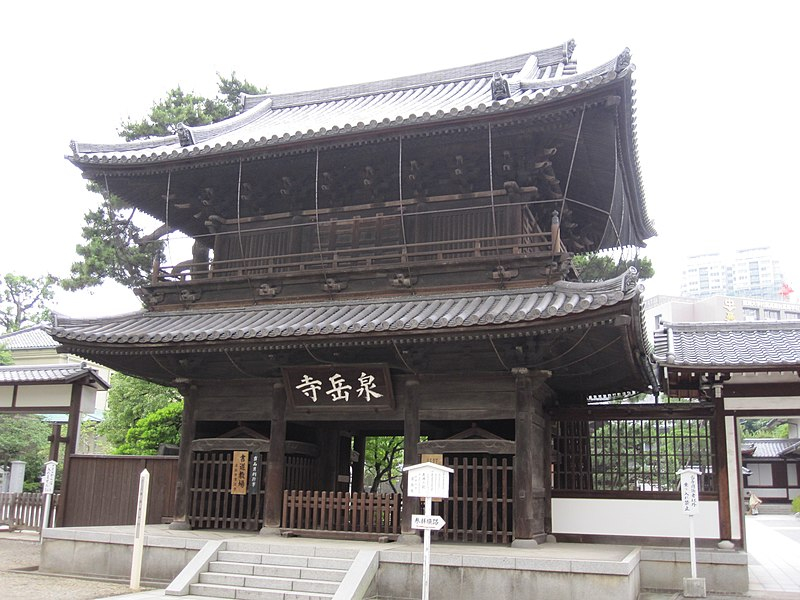
Photo by https://commons.wikimedia.org/wiki/File:Sengakuji_02.JPG Video by @Soltau Cruiser -
Founded just before his passing in 1282 by Nichiren Shōnin at the behest of devoted follower Ikegami Munenaka, Honmonji Temple, also known as Chōei-zan, or “ever-flourishing mountain,” embodies a rich history. Munenaka contributed 69,384 tsubo of land (51.89 acres), symbolizing the Chinese characters in the Lotus Sutra, as a gesture of devotion.
During World War II, the temple suffered heavy bombing on April 15, 1945, leading to the devastation of most structures, sparing only the main gate, the five-story pagoda, Kyōzō, and Tahōtō. Reconstruction ensued through nationwide contributions from followers, reviving the temple's sacred presence. A testament to the resilience of architecture, it incorporates balanced octagonal beams and holds its position as the oldest five-story pagoda in Tokyo.
Visitors ascend the steps, passing through the Niō-mon, a gate guarded by two deities, and arriving at the Soshi-dō, housing a statue of Nichiren Shōnin commissioned by his disciples. Beyond lies the Honden, enshrining Śākyamuni Buddha and the four Bodhisattvas. Adjacent stands the octagonal Gobyō-sho mausoleum, crafted from Japanese cypress, preserving some of Nichiren Shōnin's ashes in commemoration of his 700th death anniversary.
Honmonji Temple boasts the Kyōzō, a repository housing the entire Buddhist canon on revolving octagonal bookshelves. And it is also impressive with the Tahōtō, a red pagoda marking the site of Nichiren Shōnin's cremation and the sole structure of its kind in Japan, rebuilt in 1830. Honmonji Temple's history spans 700 years, making it a major center in the Nichiren Shū Order, alongside Kuonji Temple.
Address: 1 Chome-1-1 Ikegami, Ota City, Tokyo 146-8576, Japan
Phone: +81 3-3752-2331
Website: https://honmonji.jp/foreign/en.html
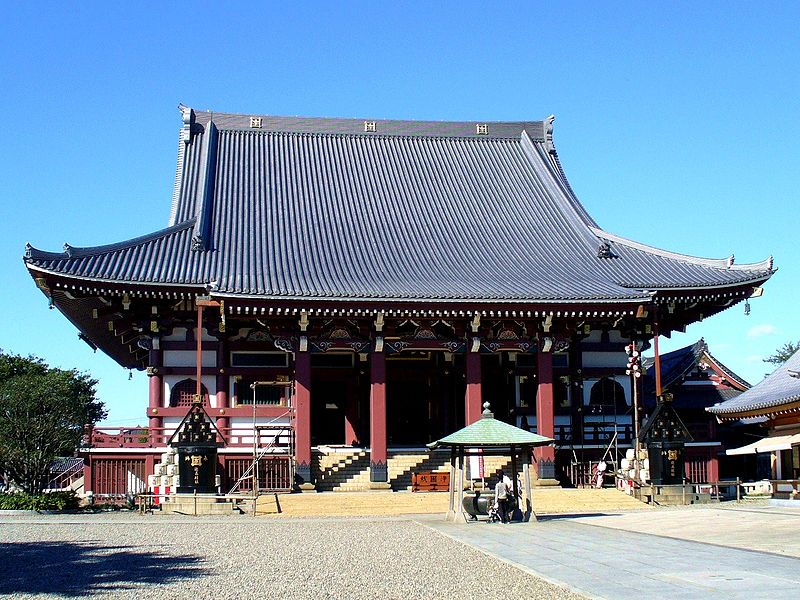
Photo by https://commons.wikimedia.org/wiki/File:Ikegami_Honmonji_Temple_%28%E6%B1%A0%E4%B8%8A%E6%9C%AC%E9%96%80%E5%AF%BA%29_-_panoramio.jpg Video by @Japan 4K Walker -
Jindaiji Temple is a venerable Buddhist sanctuary surrounded by a lush, protective forest and blessed with natural streams. Through the changing seasons, visitors are greeted by the splendor of nature: the delicate bloom of cherry blossoms and verdant foliage in spring, the shimmering sight of fireflies in summer, the captivating colors of the falling autumn leaves, and the winter celebration of the Soba Festival.
The temple's origins date back to 733, when the venerable monk Mankhoo Shonin built this sacred institution. The temple's name, "Jindaiji," pays homage to Jinja Daioh, the god of water and a character in the classic Chinese story "Journey to the West."
The enduring Main Gate, erected in 1695, proudly remains the oldest surviving structure within the temple grounds, having withstood the ravages of a fire that engulfed other buildings in 1865. Adjacent to it, the revered Bell Tower, with its current bell cast in 2001 to replace the ancient 1376 bell, proudly stands as an Important Cultural Property, its resonating chime echoing across generations.
Jindaiji Temple's Main Hall, meticulously reconstructed in 1919 after succumbing to fires in 1646 and 1865, reverently enshrines the serene statue of Amida Nyorai (Buddha). Within the hallowed walls of the mystical Ganzandaishi Hall resides Ganzandaishi, a legendary figure famed for his supposed ability to dispel misfortune. Among the temple's prized possessions rests the enigmatic Hakuhoh Buddha statue, a national treasure discovered in 1909.
Address: 5-15-1 Jindaijimotomachi, Chofu-City, Tokyo, 182-0017, Japan
Phone: 042-486-5511
Website: https://www.jindaiji.or.jp/en/
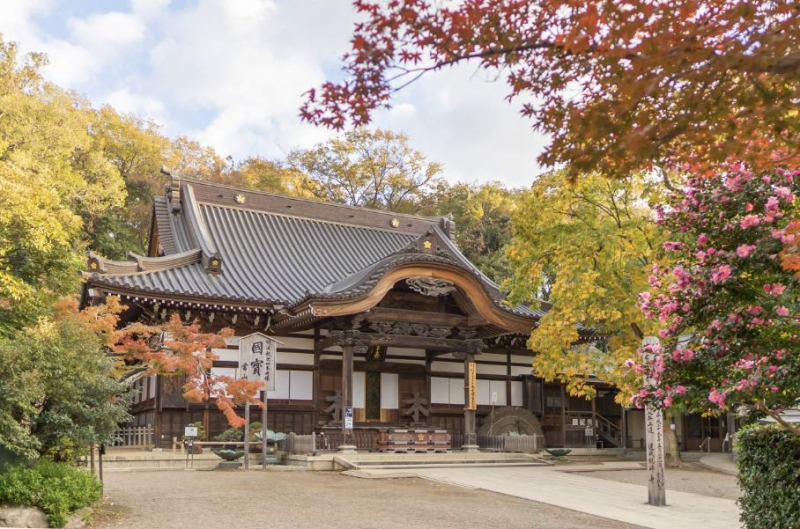
Screenshot of https://www.jindaiji.or.jp/en/ Video by @TokyoFan -
Azabusan Zenpukuji Temple was established in 824 by Kōbō Daishi (Kūkai), a prominent figure in the Shingon school of Buddhism. During the Kamakura Period (1185–1333), the temple underwent a significant transformation when Shinran visited. The esteemed priest Ryōkai, captivated by Shinran's teachings of Jōdo Shinshū, led the conversion of Azabusan Zenpukuji from Shingon to Jōdo Shinshū.
It's known for its serene atmosphere and beautiful architecture, blending traditional Japanese temple design with elegant landscaping. The temple grounds feature a variety of structures, including a main hall and several smaller buildings, each adorned with intricate details and historic artifacts.
The temple's allure extended beyond its spiritual significance, drawing influential figures pivotal to Japan's modernization, including Takashi Masuda of Mitsui & Co., Ichibei Furukawa from the Furukawa zaibatsu, and Yukichi Fukuzawa, founder of Keio University, who frequented its premises.
Despite enduring the devastation of World War II air raids in May 1945 and losing its garan (central building), Azabusan Zenpukuji Temple witnessed renewal. In 1961, the revered Main Hall of Higashi Honganji’s Yao Betsuin was offered and rebuilt as Azabusan Zenpukuji’s Main Hall. Renovations in 2008 earned the temple recognition as a Tangible Cultural Property of Minato-ku the following year.
Address: 1-6-21, Motoazabu, Minato-ku, Tokyo 106-0046, Japan
Phone: 03-3451-7402
Website: https://azabu-san.or.jp/eng/
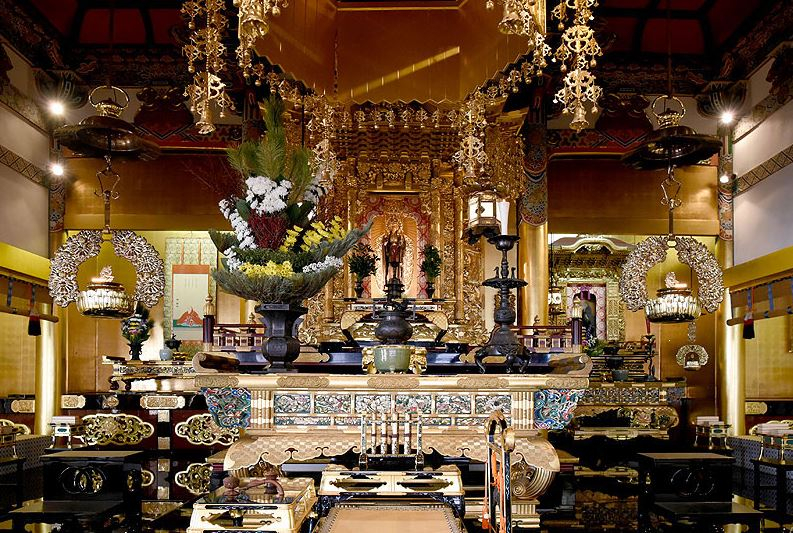
Screenshot of https://azabu-san.or.jp/eng/index2.html Video by @DEEP JAPAN -
Kaneiji Temple, situated in tranquility on the northern side of Ueno Park, is known as one of Japan's most influential and opulent temples. Once an extensive complex boasting over 30 structures, today's Kaneiji Temple encompasses the entire expanse of present-day Ueno Park and JR Ueno Station.
Kaneiji Temple has a deep link to the Tokugawa shogunate, which ruled from 1603 to 1867. Starting in 1625, it was built by Tenkai, an advisor to Tokugawa Ieyasu, just like another temple called Enryakuji near Kyoto. It was put northeast of Edo Castle to protect the shogun's home from bad luck.
However, the imperial victory, employing modern weaponry, triggered devastating fires that razed most temple structures and countless local homes. Subsequently, the government confiscated Kaneiji's land, which was transformed into Ueno Park in 1873.
Many remnants of Kaneiji, now isolated within Ueno Park, attest to its grand past. The Bentendo Temple and the Kiyomizu Kannondo Temple were once integral parts of Kaneiji. The iconic five-story pagoda now resides within Ueno Zoo. Presently, the temple houses the Kompon-Chu-do, honoring Yakushi Nyorai, the Buddha of Medicine.
The temple grounds hold many interesting things: a memorial for Ryoo Dokaku, a generous Zen monk; a copper bell made in 1681; and special tiles to keep away bad spirits. Even though Kaneiji Temple is smaller now, it still keeps parts of Japan's history alive in the peaceful area of Ueno.
Address: 1-14-11 Uenosakuragi, Taito, Tokyo 110-0002, Japan
Phone: 03-3821-4440
Website: https://kaneiji.jp/
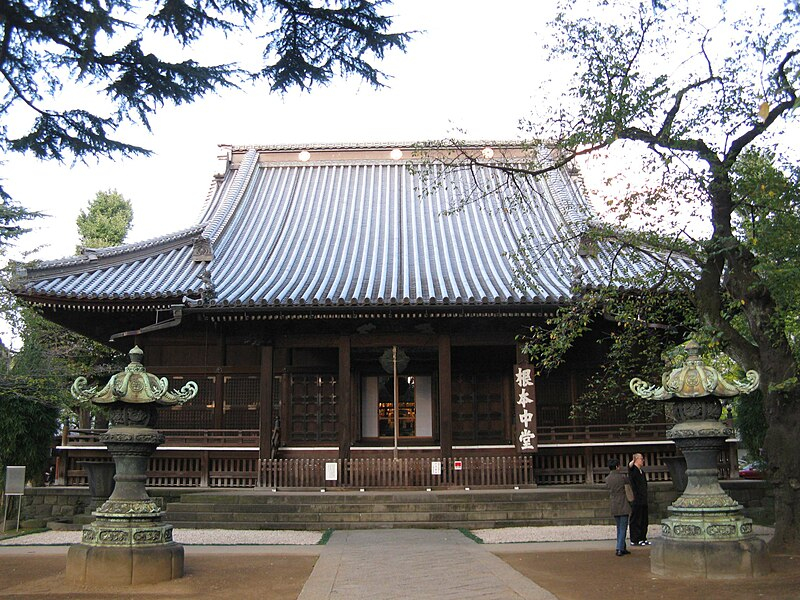
Photo by https://commons.wikimedia.org/wiki/File:Kan%27eiji_konponcyudo.jpg Video by @Tokyo Fan -
Marishiten Tokudaiji Temple honors Marishiten, a powerful Buddhist guardian known for protecting against obstacles and bringing prosperity and happiness. Inside, although the sacred statue of Marishiten isn't shown to the public, there are pamphlets with pictures showing Marishiten on a fast boar, holding up a left hand and a sword in the right.
The boar, a symbol of bravery, power, and speed, became linked with Marishiten, drawing the interest of samurai during the Edo era who looked to her for strength and protection in war. Gradually, she gained respect among merchants, entertainers, and artists, thought to bring success in commerce and the arts.
The temple was destroyed by fire during the Great Kanto Earthquake of 1923 and the Tokyo firebombing of 1945, but the precious statue of Marishiten miraculously survived. This enduring relic has led people to seek her divine protection against disasters. The current temple structure, rebuilt in 1964, protects this sacred heritage.
While the revered Marishiten statue remains hidden, the temple grounds hold other fascinating sculptures. Jogyo Bosatsu, a compassionate Buddhist saint, is revered for his ability to heal illness, or Jizo, the patron deity of children and travelers, bestows blessings on friendship, career, and relationships. Marishiten Tokudaiji Temple, though discreet, still remains one of the best Buddhist temples in Tokyo.
Address: 4 Chome-6-2 Ueno, Taito City, Tokyo 110-0005, Japan
Phone: 03-3831-7926
Website: https://www.marishiten-tokudaiji.com/
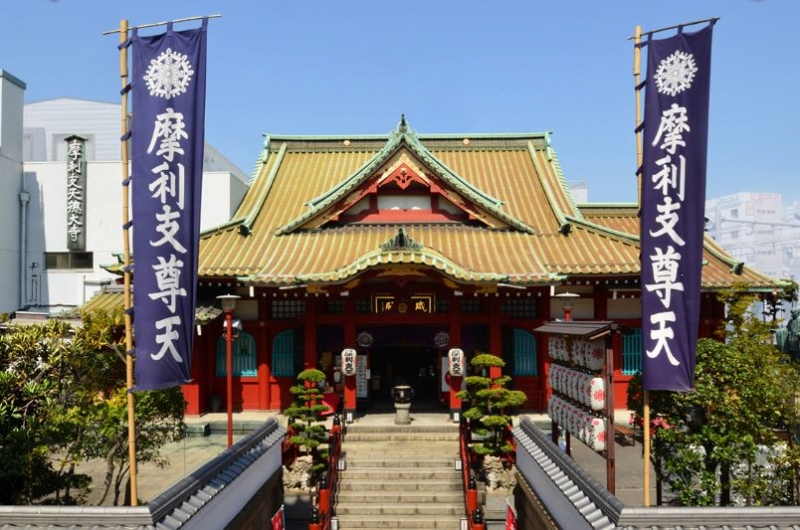
Screenshot of https://www.marishiten-tokudaiji.com/ Video by @dewa Partana -
Tennoji Temple, the oldest among Yanaka's numerous temples in Tokyo, represents the Tendai sect of Buddhism, originating in 1274 and now standing adjacent to Yanaka Cemetery near Nippori Station.
The temple was shut down by the government in the late 1600s, reportedly for beliefs considered wrong. It started again in 1699 as part of Kan'eiji Temple after Kan'eiji was damaged in the 1868 Battle of Ueno. Renowned as a Tendai sect temple, Tennoji became the sanctuary of the deity Bishamonten, revered in Japan as a god of bravery and resources.
During the Edo Period, the government permitted certain temples to conduct lotteries for fundraising, with Tennoji being the primary draw until 1842, when the permission was revoked. This led to a bustling commercial and entertainment hub along the path leading to the temple, now known as the serene "Cherry Blossom Avenue" in Yanaka Cemetery.
Within the Tennoji Temple grounds once stood a monumental 35-meter, five-story pagoda constructed in 1908. However, a notorious incident in 1957 involving a young seamstress and her lover led to the pagoda's devastating fire, reducing it to mere granite foundations, an area now enclosed within a nondescript plot with a commemorative plaque.
Address: 7 Chome-14-8 Yanaka, Taito City, Tokyo 110-0001, Japan
Phone: 03-5785-3481
Website: http://www.tendaitokyo.jp/jiinmei/tennoji/
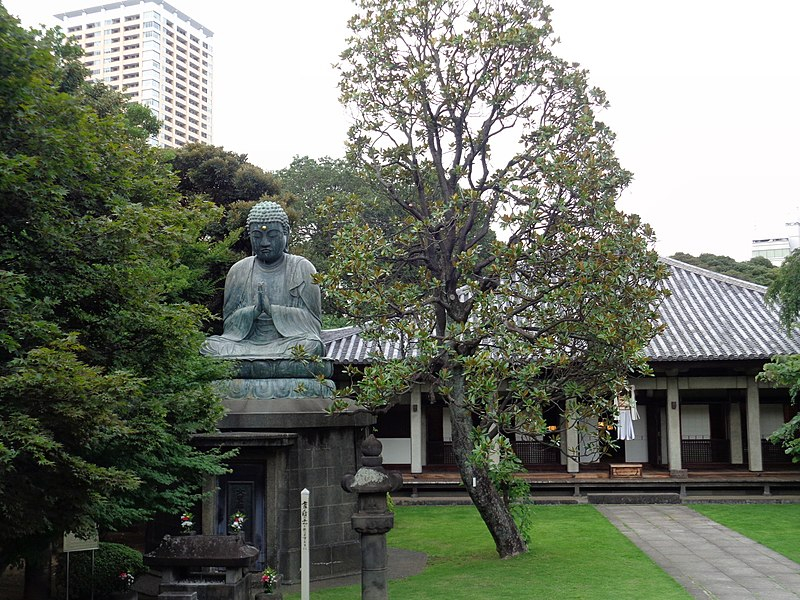
Photo by https://commons.wikimedia.org/wiki/File:Gokosukan_Tenno-ji_1.jpg Video by @ADOBOLATE Japan Walk -
Fukagawa Fudōdō Temple, located near Monzen-Nakacho Station in Tomioka, Koto-ku, stands as a significant site within the Chizan School of Shingon Buddhism, affiliated with Naritasan Shinshoji Temple. Founded in 1703, it's dedicated to Fudō Myō-ō, a deity associated with fire and believed to ward off evil spirits and bring blessings to believers.
This temple stands out for its unique architecture and serene surroundings. Notably, Naritasan Fukagawa Fudōdō Temple hosts the annual Setsubun festival on February 3rd, where attendees participate by throwing beans to ward off evil spirits and invite good fortune for the year ahead.
Throughout its history, Fukagawa Fudōdō Temple has been a spiritual haven for locals and visitors alike, offering a place for meditation and worship. The temple's peaceful ambiance and traditional rituals attract many individuals seeking solace and spiritual guidance.
Upon entering the temple buildings, the customary removal of shoes and a bow symbolize respect. The peaceful atmosphere asks visitors to stay quiet and not take pictures in certain places. Wearing attire that covers shoulders and knees is considered respectful. Overall, a visit to Fukagawa Fudōdō Temple promises a distinctive and memorable experience.Address: 1 Chome-17-13 Tomioka, Koto City, Tokyo 135-0047, Japan
Phone: 03-3641-8288
Website: http://www.fukagawafudou.gr.jp/
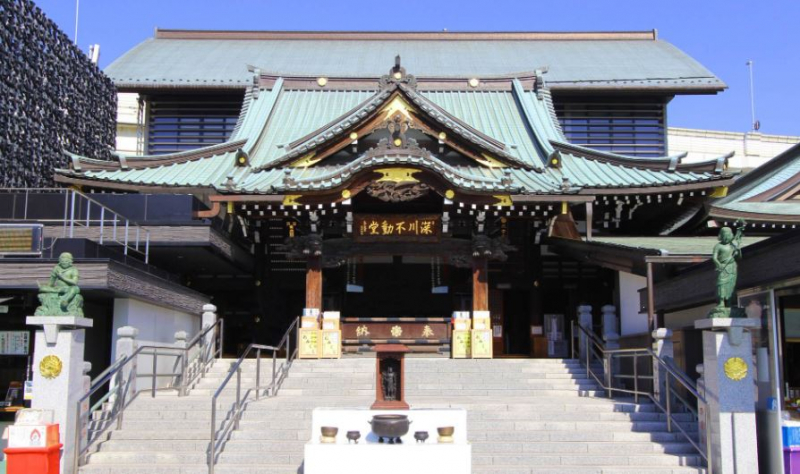
Screenshot of https://www.gltjp.com/en/directory/item/10159/ Video by @Mamiya












